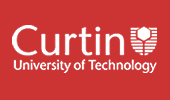|
|
|
13386 (v.3) Analytical Chemistry 114
Area: |
Department of Applied Chemistry |
Credits: |
12.5 |
Contact Hours: |
4.0 |
| |
| ** The tuition pattern below provides details of the types of classes and their duration. This is to be used as a guide only. For more precise information please check your unit outline. ** |
| |
Lecture: |
1 x 1 Hours Weekly |
Laboratory: |
1 x 3 Hours Weekly |
| |
Syllabus: |
Spectrophotometry. Electromagnetic radiation - energy levels, absorption of radiation. Quantitative applications of visible spectrophotometry - complexation reactions, indirect methods. The spectrophotometer - radiation sources, intensity control, wavelength control, sample holders, detectors. Lambert-Beer Law - linearity, deviations, sample calculations, two component systems. Introduction to chromatography - partition and adsorption processes. Column chromatography - solvent polarities (elutropic series). Paper chromatography - Rf value, two-dimensional paper chromatography. Thin layer chromatography (TLC) - advantages over paper, spot visualisation. Gel permeation. Ion exchange chromatography. Gas Chromatography - basic relationships and instrumentation. Sampling procedures. Column efficiency - theoretical plates, resolution, HETP and effect of carrier gas flow rate methods of improving column efficiency. effect of temperature. The column - packed and capillary columns - liquid phase requirements, selection. Detectors - mode of operation, sensitivity, stability, selectivity and linearity of flame ionisation, thermal conductivity and electron capture detectors. Qualitative and Quantitative Analysis. |
| |
| ** To ensure that the most up-to-date information about unit references, texts and outcomes appears, they will be provided in your unit outline prior to commencement. ** |
| |
Field of Education: |
10500 Chemical Sciences (Narrow Grouping) |
HECS Band (if applicable): |
2 |
|
Extent to which this unit or thesis
utilises online information: |
Informational |
Result Type: |
Grade/Mark |
|
Availability |
| Year |
Location |
Period |
Internal |
Area External |
Central External |
| 2004 |
Bentley Campus |
Semester 1 |
Y |
|
|
Area
External |
refers to external course/units run by the School or Department, offered online or through Web CT, or offered by research. |
Central
External | refers to external course/units run through the Curtin Bentley-based Distance Education Area |
|
Click here for a printable version of this page
|
|
 |
|


